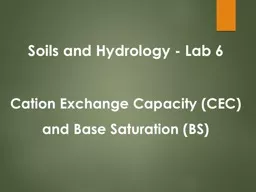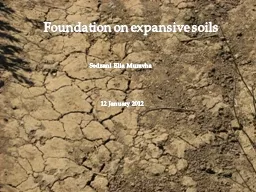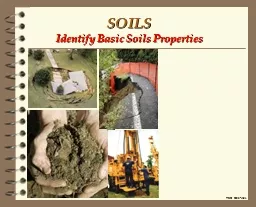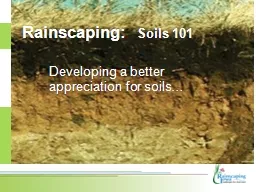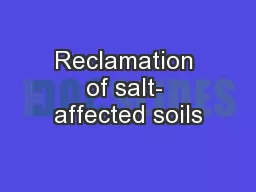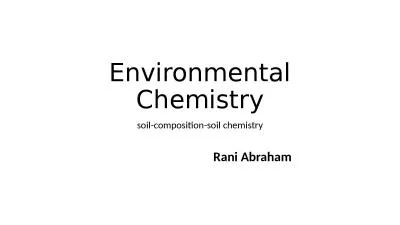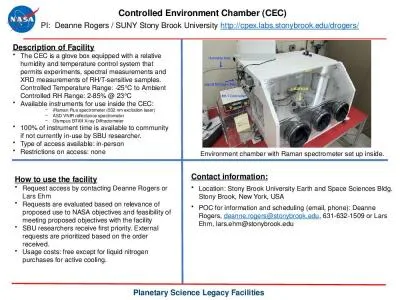PPT-Lab 6: Measuring CEC Use soils from last week to –
Author : karlyn-bohler | Published Date : 2018-11-01
gt extract exchangeable cations gt measure basic cations by AA spectroscopy gt measure acid cations by titration gt calculation CEC BS for your soil gt convert
Presentation Embed Code
Download Presentation
Download Presentation The PPT/PDF document "Lab 6: Measuring CEC Use soils from las..." is the property of its rightful owner. Permission is granted to download and print the materials on this website for personal, non-commercial use only, and to display it on your personal computer provided you do not modify the materials and that you retain all copyright notices contained in the materials. By downloading content from our website, you accept the terms of this agreement.
Lab 6: Measuring CEC Use soils from last week to –: Transcript
Download Rules Of Document
"Lab 6: Measuring CEC Use soils from last week to –"The content belongs to its owner. You may download and print it for personal use, without modification, and keep all copyright notices. By downloading, you agree to these terms.
Related Documents

